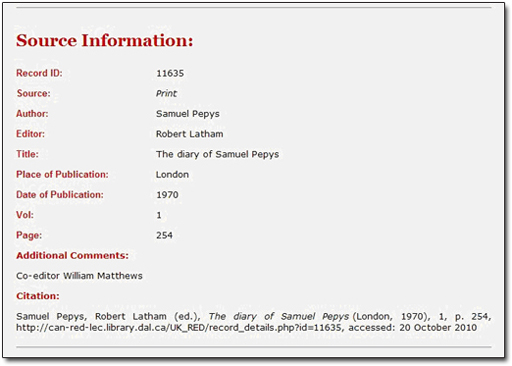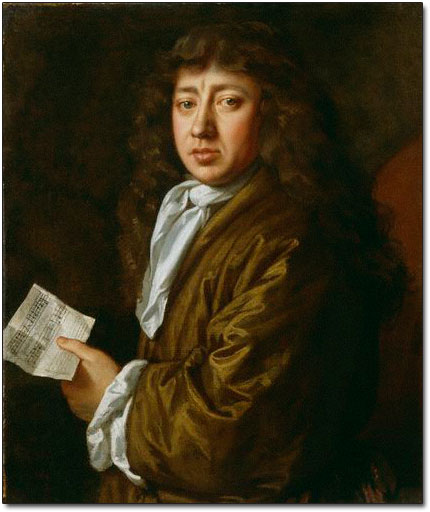2 Evidence of reading experiences
In this section, we will look in detail at some of the types of sources used to compile UK RED and consider what each set might contribute to our understanding of reading in the past. Thinking hard about these sources should not only help you to become critical of the different types of evidence used for studying reading, but also suggest some pathways for your own research.
Before we delve into different categories of evidence in detail, it might be worthwhile to point out exactly where the details of the source from which the reading experience is derived are located. Source information can be found right at the bottom of the page which displays the record details. Let me walk you through the process:
Go to the advanced search [Tip: hold Ctrl and click a link to open it in a new tab. (Hide tip)] and under reader, type in ‘Samuel Pepys’ (right-click on the link to open it in a new tab or window). You should get close to 400 records. Select any record from the list – click on the coloured link to go to the record details. Then, scroll down until you get to a section called ‘Source Information’. It should look just like this:

In this case, I clicked on Samuel Pepys reading John Speed’s A Prospect of the Most Famous Parts of the World, (UK RED: 11635). The source for this is Samuel Pepys’s diary, which was edited from the original manuscript by Robert Latham and William Matthews and published in 1970. All this information is laid out in the relevant fields. At the very bottom we also supply citation details. If you are citing evidence from UK RED, it is crucial that you use the UK RED citation rather than referring to the original source. That is because UK RED represents a ‘publication’ of that source, and if there are any errors in the transcription, these remain our responsibility. This allows anyone reading your work to accurately assess where you gathered your information from.

It might be worth spending a few minutes now to become acquainted with the different ways in which evidence is described. For example, the Pepys entry comes from a published book. In UK RED, there are many entries that come from manuscript sources, like this one: evidence that John Buckley Castieau, the Melbourne prison governor, read Gil Blas comes from his manuscript diary stored at the National Library of Australia. Because of the range of sources for the evidence of reading, sometimes the description of the source defies print or manuscript classification. Details for these sources have been entered in the ‘other’ section on the contribution form, and appear like this: this evidence came from a court transcript which has been digitised as part of the Old Bailey Online project. Although the original source was a published pamphlet, the use of the Old Bailey Online method of citation acknowledges their digitisation of the collection and directs the user of UK RED back to the original source quickly and easily.
